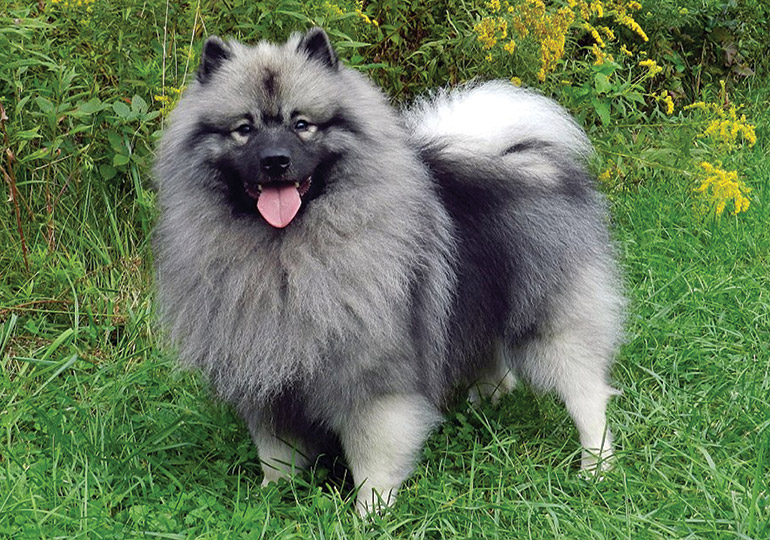Keeshond
Breed Details
Size:
Exercise Requirements:
Grooming Requirements:
15-25 kg (approx)
12-15 years (approx)

Appearance
A Spitz breed with a short, compact body and alert expression enhanced by "spectacles" which appear as a delicately penciled black line slanting from the outer corner with distinct markings and shadings forming expressive short eyebrows. The head is wedged shaped. Erect, velvety ears. The feet should be cat-like and cream in colour with black nails. The tightly curled tail may show a double curl which is highly desirable with a light plume. The keeshond has a magnificent double coat, consisting of a long harsh outer coat and a thick fluffy undercoat, the coat is a mixture of grey and black.
History
This outstandingly beautiful breed has been known in Europe for centuries. In the 17th and 18th centuries, they were extensively used as watchdogs on riverboats, farms, and barges and were known in Germany as "Wolfspitzen", in France as "Chiens Loup", in Italy as "Lupini", and in Holland as "Keeshond". The breed has a long history of popularity with the people of Holland and was used for a variety of jobs, but known as being the "Dutch Barge Dog", as they were customarily used on barges as a guard and a companion. The accepted theory for the breed name is that it was named after "Kees" the leader of the Dutch Patriot Party, for which the Keeshond was the mascot. The Keeshond as we know it today is basically the work of breeders in England, as at the beginning of the 20th century the breed was further developed in England from imports obtained from both Holland and Germany. Bred primarily today as a companion and watchdog for the family.
Temperament
The Keeshond makes an excellent companion and watchdog, being very fond of members of his own family however can be somewhat aloof with strangers but at the same time, friendly and not easy to train, not a breed for the inexperienced trainer. Consistency and fairness are needed with a Keeshond. Their intelligence, in some ways, can be a liability, especially in obedience work, where they can get bored with repetitive training. They need daily contact with their owners and lots of activity to remain happy. Therefore, it is not the right choice of breed for those who want a dog that lives happily alone in a kennel or backyard.
Care/Grooming
Grooming should be done from the skin out weekly, Keeshond shed heavily twice per year, Spring and Autumn, when the undercoat detaches from the body, and then it is brush, brush, for about 2-3 weeks. Baths should be given only when necessary. The coat should be thoroughly brushed before bathing, and thoroughly dried after the bath. Use a quality shampoo and conditioner, then blow dry well. This helps the coat dry quickly and reduces tangles in the brushing-out process. Use a slicker brush and a toothed comb. You can tidy the feet and the hocks.

